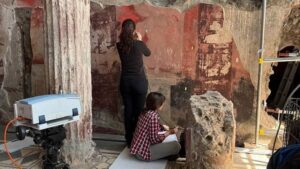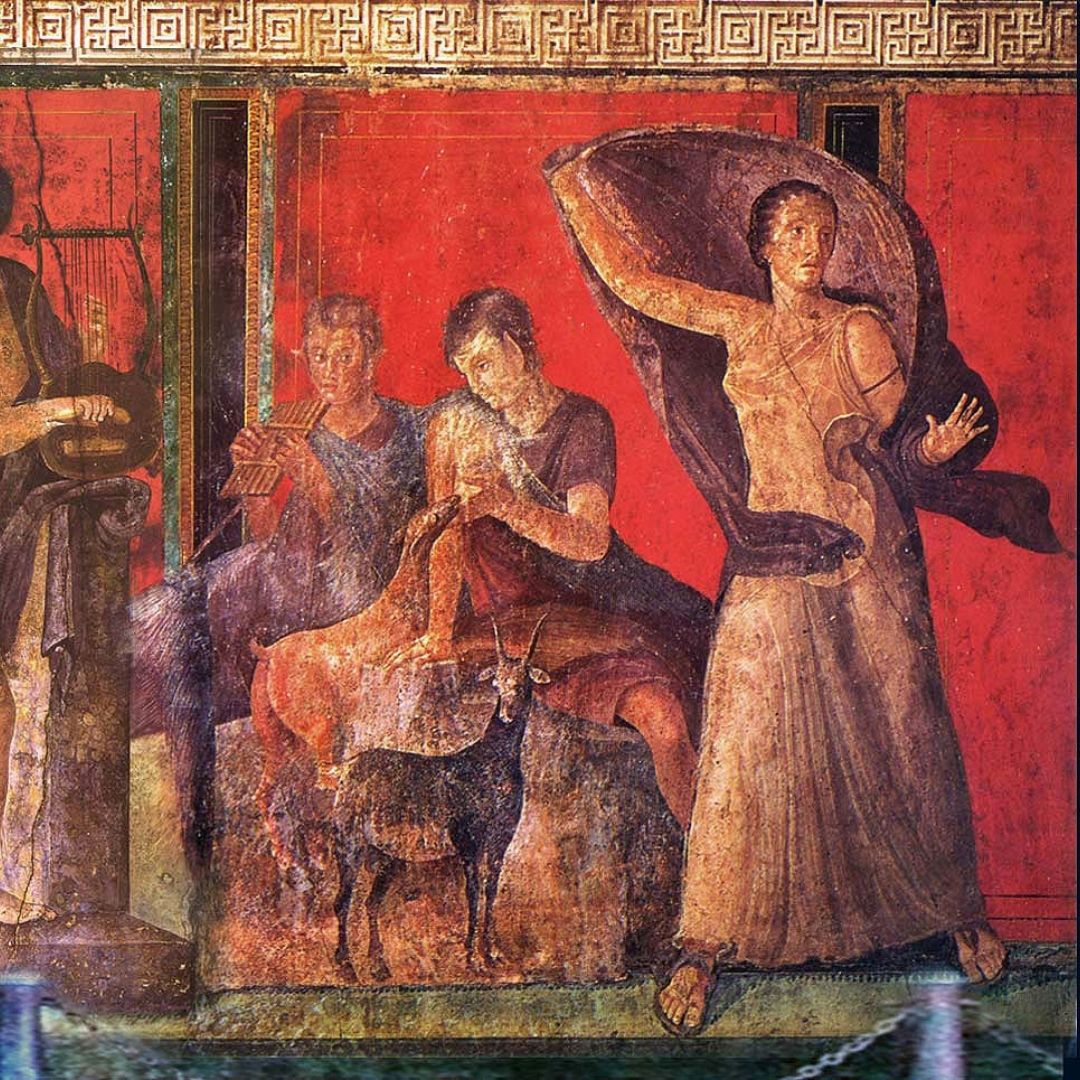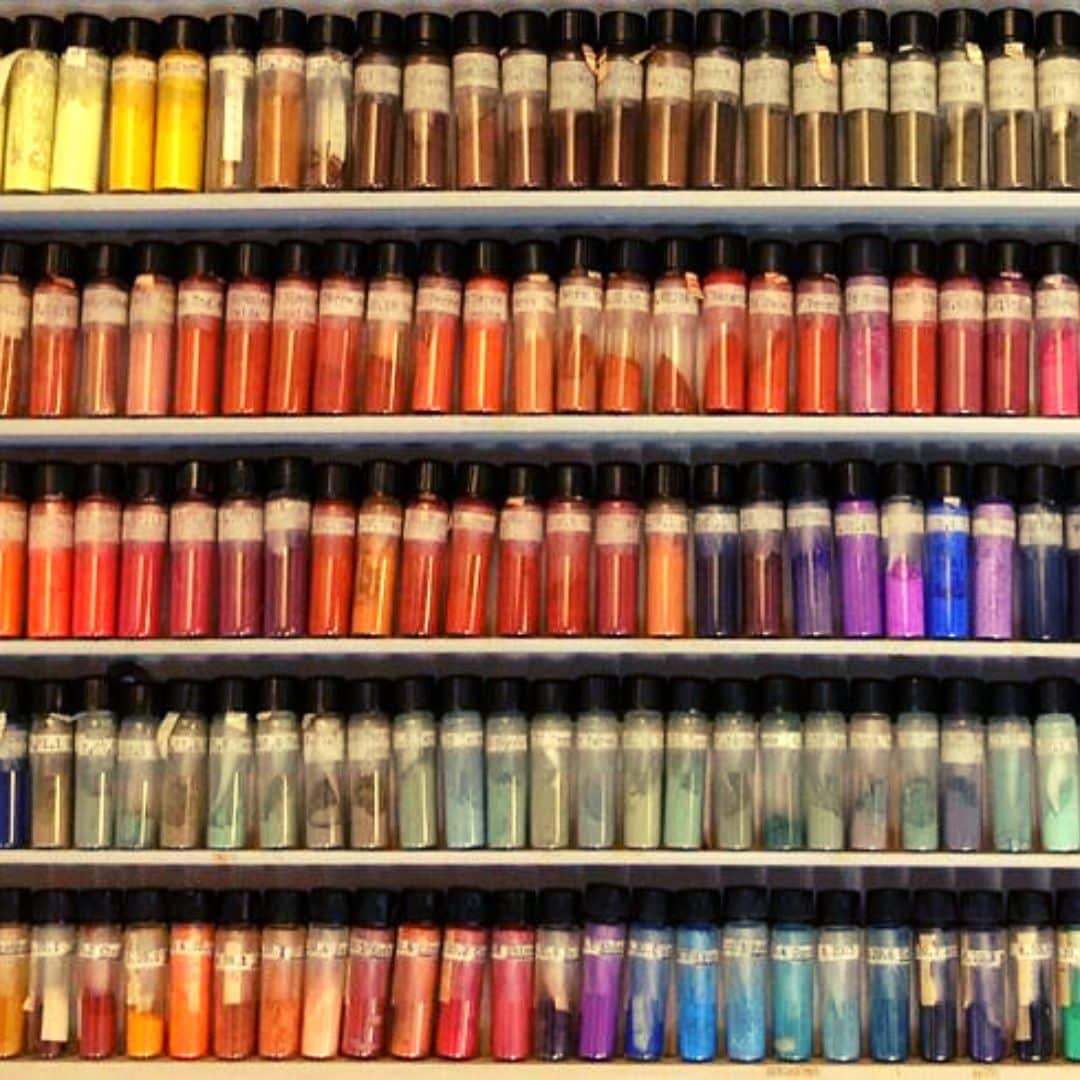A new gray pigment has been discovered in Pompeii that reveals more about Roman civilization.
In this article, learn about the newly discovered Pompeian gray.
Learn more about pigments in the course History of Pigments in Art
Pigments in Pompeii
The most important historical sources for the study of Roman art, and particularly the history of Roman pigments, are undoubtedly the ruins of Pompeii and Herculaneum. The sudden eruption of Vesuvius that suddenly buried these cities left behind archaeological remains that allow us to understand what Roman life was like.
Each new excavation in the Archaeological Park of Pompeii reveals new data that allows historians to rethink the history of Ancient Rome and reveals the levels of sophistication of this civilization.
This is the case of Pompeian Gray, discovered in 2025.
Pompeian Gray
In 2025, this new pigment was discovered in the palette of Ancient Rome, dating from between the 3rd century BC and 79 AD.
Pompeian gray is composed of barite (barium sulfate) and alunite, a combination never before seen in ancient Mediterranean mural painting.

This mixture gives the pigment a grayish hue with a unique chromatic depth, used by Roman artists to give realism and volume to pictorial compositions.

Some of the pigments discovered in Pompeii
This discovery broadens the known color palette of Roman art and suggests that artists of the time had advanced knowledge in the creation and application of pigments.
The inclusion of Pompeian gray in the frescoes indicates a level of artistic sophistication superior to what had been documented until now and a high level of knowledge in the processing of chemical mixtures.
To illustrate this statement, let us look at the characteristics of some of the best-documented pigments in Pompeii until the latest discoveries and analyses carried out by archaeologists at the Archaeological Park of Pompeii.
Gray
(prior to the recent discovery)
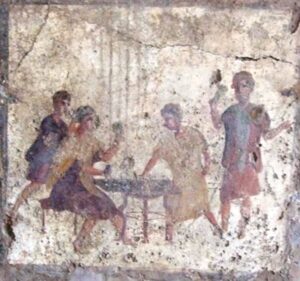
Hue
Medium to dark gray, warm or bluish.
Composition
Volcanic ash, charcoal powder.
Use
Neutral background for frescoes.
Red
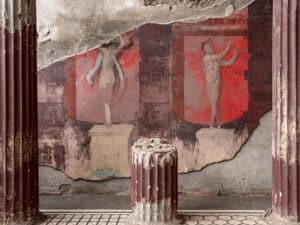
Hue
Intense red, earthy
Composition
Natural cinnabar or hematite
Use
Mythological scenes, main walls
Yellow Ochre
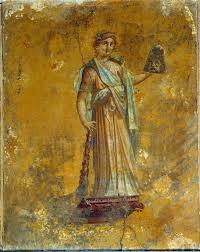
Hue
Warm yellow, golden yellow
Composition
Natural ochre (iron oxides)
Use
Friezes, secondary backgrounds
Black
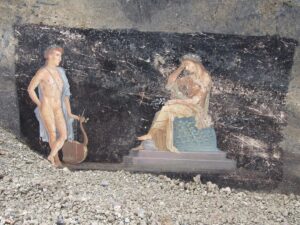
Hue
Deep black
Composition
Carbon black, charcoal
Use
Contours, backgrounds
White
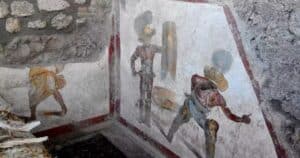
Hue
Pure white or ivory
Composition
Slaked lime, gypsum
Use
Base for frescoes
Blue
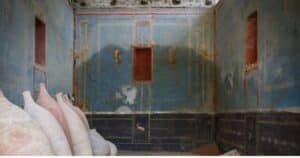
The color blue was not common in ancient Roman paintings, which makes the discovery in 2024 of a small sanctuary in a Roman domus in Pompeii with blue-decorated walls even more surprising.
The composition of this pigment required an already complex process of preparation and mixing, and its main components were malachite or azurite.
This sequence of discoveries, combined with new research being carried out by archaeologists, may well lead to the discovery that the Romans used other pigments and colors that we cannot currently imagine.
About Pompeii and Herculaneum
The ruins of Pompeii and Herculaneum tell the story of almost nineteen hours of torment when Mount Vesuvius erupted on August 24, 79, in the Bay of Naples, in the Campania region of southern Italy.
The eruption of Vesuvius
The eruption of Vesuvius took the populations of Pompeii and Herculaneum by surprise, decimating them and causing panic.
During the eruption of Vesuvius, between 20,000 and 30,000 people died in the earthquakes and fires, were hit by the rain of pumice during their escape, crushed in their homes by roofs laden with stones, and suffocated by the smoke.
The discovery of the cities of Pompeii and Herculaneum
It was not until 1748 that the existence of these ruins was realized, and excavations began, which continue today.
Regarding Vesuvius (which last erupted in 1944), on a trip to Italy in 1816, Johann Goethe said, “Many catastrophes have happened in the world, but few have given so much joy to posterity.”
The fact is that thanks to the lava, the buried cities were preserved for centuries in excellent condition, which now allows us to visit them and recreate a clear and faithful image of what life would have been like in Ancient Rome. And as new excavations and scientific studies advance, more is being discovered about the sophistication of Roman civilization.

